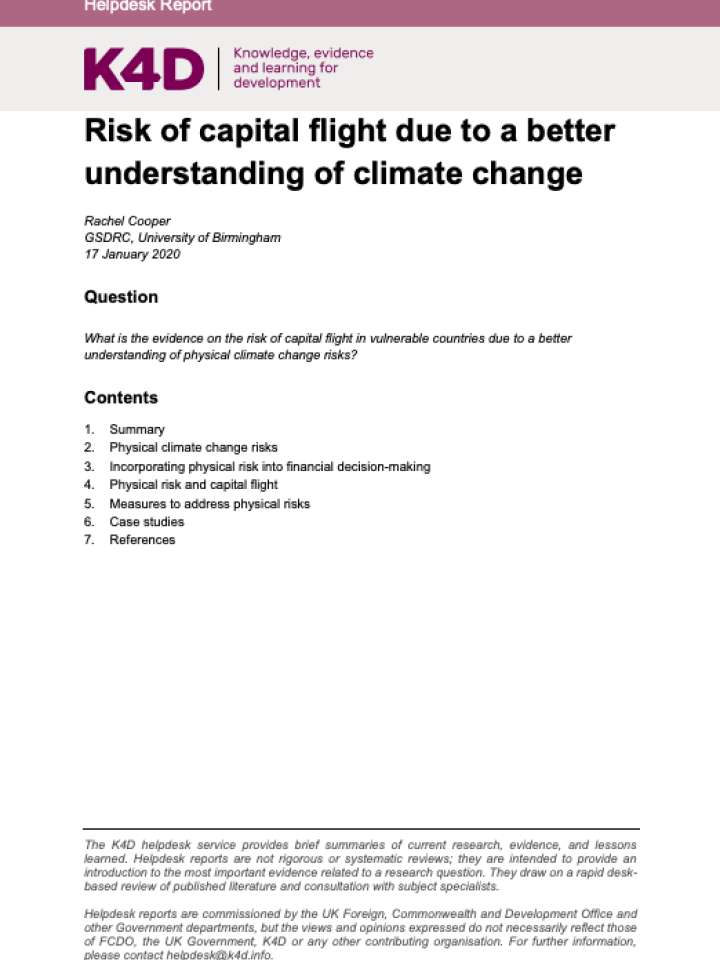Risk of capital flight due to a better understanding of climate change
The physical risks of climate change, including both gradual global warming and an increase in extreme weather events, are likely to cause increasing financial and economic losses. Lower and middle-income countries may be more vulnerable to physical risks due to their reliance on climate-sensitive economic sectors and their limited capacity to absorb economic losses. However, vulnerable regions in developed countries are also at risk and impacts will also be felt through the global nature of many supply chains.
Economic risks and impacts due to the physical risks of climate change include demand and supply-side losses, reductions in economic growth, destruction of public and private capital, and output losses. Impacts will be experienced at the macro-economic level as well as by individual actors such as companies and investors. Consequently, policy-makers, investors, and companies will all play a role in responding to the growing financial threat from climate change (MacWilliams et al., 2019).
Despite the potential economic losses and the likelihood that all investments and asset classes are exposed to the physical risks of climate change to some degree, few actors in the financial sector are incorporating physical risks into decision-making. The Task Force on Climate-Related Financial Disclosures (TCFD), launched in 2015, has developed a series of recommendations for companies to disclose their climate-related risks. Investors can then use this information to make informed capital allocation decisions. The TCFD argues that increased transparency around climate change risks will lead to more efficient markets and more stable and resilient economies. However, it is also possible that a better understanding of physical risks could lead to capital flight from risk-exposed investments and a lack of access to finance for those who need it most.
Explore further
